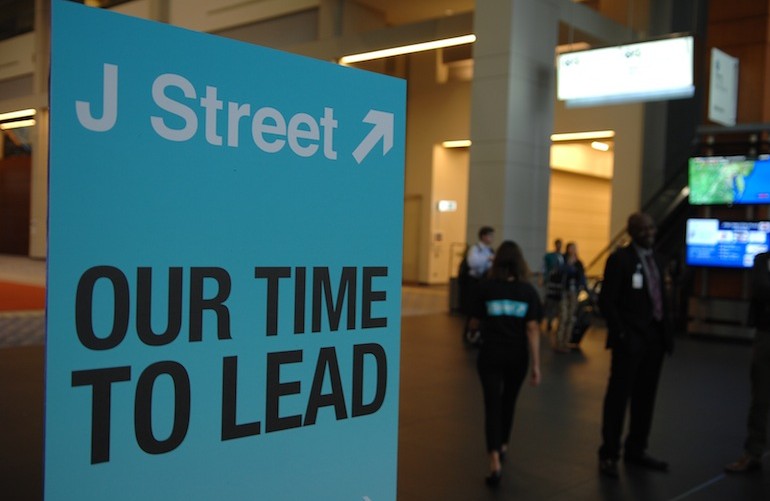Who sunk J Street’s bid to join the Conference of Presidents of Major American Jewish Organizations? The answer: We don’t know.
Wednesday’s vote was conducted by secret ballot, so we can’t say for certain which of the Conference of Presidents member groups voted for or against granting J Street membership.
But we do have some sense of how the vote went down. And it’s clear that the dovish Israel policy group failed to win the support of a number of influential Jewish groups.
Seventeen groups voted in favor of J Street’s bid, 22 against, three abstained and another eight were not present. So J Street didn’t win a majority, let along the two-thirds vote of the conference’s 50 member groups necessary to gain entry.
Before the vote, J Street claimed that 15 groups had come out in support of its bid. (Compare J Street’s graphic to the complete conference member list to see which groups were accounted for.)
The groups listed as supporting the bid were affiliates of the Reform and Conservative movements, various dovish and liberal groups, some women’s groups, the Hebrew Immigrant Aid Society, the Anti-Defamation League and the Jewish Council for Public Affairs. (That’s not a majority, but it’s not chopped liver either, as JTA’s Ami Eden noted.)
Assuming that all these groups voted as J Street anticipated, that means only two additional groups voted in favor of granting membership.
We don’t know as much about which groups voted against J Street’s bid. Most of them played their cards close to their chests before the meeting. According to J Street, only two hawkish groups — the Zionist Organization of America and National Council of Young Israel — had publicly declared their opposition as of the day of the vote.
That leaves 20 more groups that ended up voting against J Street.
Who are they?
Some of J Street’s supporters blamed the outcome on the votes of small groups.
Meanwhile, The New York Times reported:
The ballots were secret, but several of those present said that it appeared, based on public statements made before Wednesday as well as comments made during the debate, that the voting broke down in large part along ideological and religious lines, with Orthodox and multiple affiliated organizations opposing J Street, and the non-Orthodox members supporting the group’s application.
But there aren’t enough Orthodox or overtly right-wing groups to account for all the votes against J Street.
If J Street’s pre-vote tally of its supporters reflected their actual votes, that means a number of pretty significant and broader-based Jewish groups either abstained, didn’t show up or voted against J Street’s bid.
Because admission requires two-thirds support of all conference members, abstentions, no-shows and “no” votes all have the same practical effect. Under conference rules, essentially either you’re for J Street’s entry or you’re not.
JTA’s Ron Kampeas asked Jewish Federations of North America and the American Jewish Committee how they voted, and both declined to say. He also asked the American Israel Public Affairs Committee how it voted and didn’t get a response.
UPDATE: The Forward’s J.J. Goldberg says he’s figured out all the “yes” votes and has shed some additional light on the rest. (Interestingly, he notes that two of the conference’s 50 members — the Workmen’s Circle and Jewish Labor Committee — actually share a single vote, thus raising questions about the precision of the previously reported totals.)
JTA has documented Jewish history in real-time for over a century. Keep our journalism strong by joining us in supporting independent, award-winning reporting.






